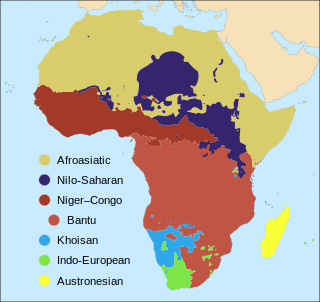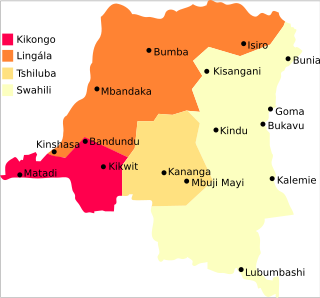Most languages of Europe belong to the Indo-European language family. Out of a total European population of 744 million as of 2018, some 94% are native speakers of an Indo-European language. Within Indo-European, the three largest phyla in Europe are Romance, Germanic, and Slavic; they have more than 200 million speakers each and together account for close to 90% of Europeans. Smaller phyla of Indo-European found in Europe include Hellenic, Baltic, Albanian, Celtic, and Armenian ; Indo-Aryan, though a large subfamily of Indo-European, has a relatively small number of speakers in Europe.

Ethnologue: Languages of the World is an annual reference publication in print and online that provides statistics and other information on the living languages of the world. It is the world's most comprehensive catalogue of languages. It was first issued in 1951, and is now published by SIL International, an American evangelical Christian non-profit organization.

The total number of languages natively spoken in Africa is variously estimated at between 1,250 and 2,100, and by some counts at over 3,000. Nigeria alone has over 500 languages, one of the greatest concentrations of linguistic diversity in the world. The Languages of Africa belong to many distinct language families, among which the largest are:

Languages spoken in the Republic of India belong to several language families, the major ones being the Indo-Aryan languages spoken by 78.05% of Indians and the Dravidian languages spoken by 19.64% of Indians, both families together are sometimes known as Indic languages. Languages spoken by the remaining 2.31% of the population belong to the Austroasiatic, Sino–Tibetan, Tai–Kadai, and a few other minor language families and isolates. As per the People's Linguistic Survey of India, India has the second highest number of languages (780), after Papua New Guinea (840). Ethnologue lists a lower number of 456.
Lists of endangered languages are mainly based on the definitions used by UNESCO. In order to be listed, a language must be classified as "endangered" in a cited academic source. Researchers have concluded that in less than one hundred years, almost half of the languages known today will be lost forever. The lists are organized by region.

The English-speaking world comprises the 88 countries and territories where English is either an official, administrative, or cultural language. As of the 2000s, nearly 2 billion people globally speak English, making it the largest language by number of speakers, and the third largest language by number of native speakers, as well as the most geographically widespread language. The regions where English is natively spoken by the majority of the population, due to cultural connections to England, are termed "the Anglosphere". Speakers of English are called Anglophones.
A minority language is a language spoken by a minority of the population of a territory. Such people are termed linguistic minorities or language minorities. With a total number of 196 sovereign states recognized internationally and an estimated number of roughly 5,000 to 7,000 languages spoken worldwide, the vast majority of languages are minority languages in every country in which they are spoken. Some minority languages are simultaneously also official languages, such as Irish in Ireland or the numerous indigenous languages of Bolivia. Likewise, some national languages are often considered minority languages, insofar as they are the national language of a stateless nation.
Linguistic demography is the statistical study of languages among all populations. Estimating the number of speakers of a given language is not straightforward, and various estimates may diverge considerably. This is first of all due to the question of defining "language" vs. "dialect". Identification of varieties as a single language or as distinct languages is often based on ethnic, cultural, or political considerations rather than mutual intelligibility. The second difficulty is multilingualism, complicating the definition of "native language". Finally, in many countries, insufficient census data add to the difficulties.
The Republic of Vanuatu has the world's highest linguistic density per capita.

The Democratic Republic of the Congo is a multilingual country where an estimated total of 242 languages are spoken. Ethnologue lists 215 living languages. The official language, inherited from the colonial period, is French. Four other languages, three of them Bantu based, have the status of national language: Kikongo, Lingala, Swahili and Tshiluba.
This page is a list of lists of languages.

The main language spoken in Sri Lanka is Sinhala. Several languages are spoken in Sri Lanka within the Indo-Aryan, Austronesian, and Dravidian families. Sri Lanka accords official status to Sinhala and Tamil, and English as a recognised language. The languages spoken on the island nation are deeply influenced by the various languages in India, Europe and Southeast Asia. Arab settlers and the colonial powers of Portugal, the Netherlands and Britain have also influenced the development of modern languages in Sri Lanka. See below for the most-spoken languages of Sri Lanka.

The languages of Turkey, apart from the official language Turkish, include the widespread Kurdish (Kurmanji), the moderately prevalent minority languages Arabic and Zazaki, and a number of less common minority languages, some of which are guaranteed by the 1923 Treaty of Lausanne.

Linguistic diversity index (LDI) may refer to either Greenberg's (language) Diversity Index or the related Index of Linguistic Diversity (ILD) from Terralingua, which measures changes in the underlying LDI over time.
This is a list of the number of languages by country and dependency according to the 22nd edition of Ethnologue (2019).







